
What is the Connection to Non-Alcoholic Fatty Liver Disease and Celiac?

*CeD = celiac disease and NAFLD=Non-Alcoholic Fatty Liver Disease
“A recent study has revealed that CeD patients have a higher association with NAFLD than the general public. This scientific finding was confirmed by experts at the Celiac Disease Center and Department of Pediatrics at Columbia University, as well as at the Department of Medicine and Epidemiology/Biostatistics of Stockholm, Sweden, and the Department of Pediatrics in Örebro University Hospital.” https://celiac.org/blog/2015/07/celiac-disease-and-non-alcoholic-fatty-liver-disease/#xpwOiEVcpde5Lskg.99
I’m going to assume that you already know that Celiac Disease is an auto-immune disease and how it works. But, just in case you need a refresher or don’t know much about celiac, check out more about Celiac Disease here: https://www.gluten.org/resources/getting-started/celiac-disease-2/
***I am not a doctor, don’t take this as medical advice. Always do your own research and consult a medical professional with any concerns you have. I hope to give you a place to start looking and something to consider.
About the liver
So, how much do you know about your liver? It really is an amazing organ! The liver has the ability to repair or regenerate itself! It is the only organ that can do this!
Did you know your liver is considered your largest gland?! More accurately, it is a glandular organ. The reason it is considered a gland is because it produces bile.
The function of bile
Bile is needed in order to properly digest fats and aids in digestion. Sounds like an enzyme, because it breaks down many things to be used or better absorbed. However, bile is not an enzyme. Still, it does help aid enzymes secreted by the pancreas. Bile plays an important part in breaking down fat to absorbable pieces for the small intestine.
How your liver works with your pancreas

So, how do the liver and pancreas work together? When the body’s glucose (sugar) levels drop below normal the liver goes to work and converts the stored sugar into a form of sugar the body can use. It’s as if the liver says, “Hey, pancreas! You look a little low; here’s a little sugar to pull you through.”
I can’t help but wonder if the liver not functioning properly is one of the reasons that many people with celiac also develop diabetes? Of course, the liver wouldn’t be the only reason this could happen.
*Did you know that damaged villi in the intestines can keep enzymes from being able to break down sugar? (The villi aid in digestion and each part helps different kinds of foods to be broken down: top part is dairy, middle is sugar and the bottom is fats. So, the more damage the less enzymes your body is able to produce to help break down these foods.)
Back to the liver
If your liver isn’t working properly then it can’t do it’s job effectively. Celiac disease isn’t just a gut disease (small/large intestine and stomach), it can effect multiple systems of the body. In fact, it can affect every part of your body, in some way!
The liver does more amazing things like breaking down hemoglobin, insulin and other hormones! ( http://www.healthline.com/human-body-maps/liver#seoBlock )
It’s job in detoxing
I bet you think that the kidneys are the only organs responsible for urine. The liver does it’s own filtering, cleaning toxins and harmful substances from the body. Until I did this research, I thought the kidneys did most, if not all, the work! Your liver breaks down protein and changes it into a substance called urea, which then goes on to the kidneys and that waste is removed from the body with the urine. ( http://www.webmd.com/a-to-z-guides/blood-urea-nitrogen#1 )
One of the jobs of the liver is to work as storage.
The liver stores fats, vitamins, iron and sugar. (*Many people with celiac disease have suffered with anemia before and sometimes even after their celiac diagnosis.)
To re-cap the liver’s responsibilities:
- Clean toxins and other harmful substances from the body (drugs, alcohol, chemicals)
- Detoxing the body (making urea)
- Chemical conversion (changing sugar to be used by the pancreas, breaking down hemoglobin, insulin and other hormones)
- Energy storage (Fats, iron and other vitamins)
Fatty Liver Disease VS Non-Alcoholic Fatty Liver Disease (aka NAFLD)

Don’t get confused. Non-Alcoholic Fatty Liver Disease doesn’t have to do as much with your weight as it does with the fat being hoarded by the liver which can enlarge it.
The difference is about like it sounds. Non-Alcoholic Fatty Liver Disease happens to people who don’t drink large amounts (if any) of alcohol. While Fatty Liver Disease is one of the consequences of alcoholism. Symptoms get worse after heavy alcohol consumption.
- Fatigue, tired
- Loss of weight or appetite
- Weakness
- Nausea
- Confusion, poor judgement, or trouble concentrating
( http://www.webmd.com/hepatitis/fatty-liver-disease#1 )
What is non-alcoholic fatty liver disease
In NAFLD, the liver actually gets fat- the fat in the liver cells is excessive. Remember, it is normal and healthy for the liver to store fats. It’s part of its job. However, the fat accumulation in NAFLD is on a hoarding scale. How much fat does it take to be in this category? Only 5%-10% of the liver’s total weight, being fat. The glandular organ increases in size and sometimes patients will feel pain just under their lower right rib. ( https://celiac.org/blog/2015/07/celiac-disease-and-non-alcoholic-fatty-liver-disease/ )
*Anyone who has abnormal liver levels should be checked for celiac disease. (If not, already diagnosed.) Most liver levels will normalize once they are following a strict gluten free diet. The average person, in the study, had levels normalize after 1.5 years being strictly gluten free. Unfortunately, it isn’t necessarily the case for all celiac patients and scientist aren’t sure why.
Who’s at risk?
While those with celiac seem to be at a higher risk, 3X higher, it is yet unknown why this is the case. More risks as to why some people develop NAFLD are:
- gluten consumption before diagnosis of celiac
- abnormal intestinal absorption
- genetic factors
- overgrowth of bacteria in the small intestines
- middle-aged
- viral hepatitis
- fast weight loss
- obesity
- malnutrition
- some medications can cause damage (including acetaminophen)
- diabetes
For people with celiac disease the risk is greatest during the first year, after the diagnosis of celiac. This risk continues to be high for as long as 15 years after the diagnosis of celiac disease. https://www.verywell.com/celiac-disease-and-liver-diseases-562618
However, the good news is that most people will have normal liver levels in 6-12 months of adhering to a strict gluten free diet! https://www.cureceliacdisease.org/wp-content/uploads/0610CeliacCtr_Newslinks.pdf
*Keep in mind that while it is called “fatty” liver disease it is not referring to your physical shape but rather what is happening to your liver!
Symptoms
Most people don’t have symptoms.
When symptoms are present, a person may experience some of the following:
- feeling tired
- loss of weight and appetite
- weakness
- nausea
- confusion
- poor judgement
- trouble concentrating
- enlarged liver
- pain in the center or upper right side of your body under the bottom rib
- discolored patches of skin on neck, face or under arms
Testing for NAFLD
NAFLD can be confirmed through a biopsy. A blood panel that measures ALT is also a good indicator according to Dr. Alan Christiansen. In his post he lists 10 ways to manage NAFLD.
Treatment

Click here for an Easy Gluten Free Pesto Chicken and Alfredo recipe. https://www.shannonsgrotto.com/easy-gluten-free-pesto-chicken/
If you have celiac, it will greatly help your liver for you to be strictly gluten free! Most will be able to reduce the level of liver enzymes; normalizing the levels. http://www.belmarrahealth.com/celiac-disease-associated-with-liver-disease/
If you have diabetes NAFLD can be improved by properly managing your diabetes.
If you drink alcohol- stop.
*I would add that if you drink a lot of caffeinated and high fructose drinks that it would also help to stop drinking those. I say this because of the job the liver performs and that it has to be hard on the body doing all of that cleaning and detoxing! http://glutenfreern.com/non-alcoholic-steatohepatitis-nash-and-celiac-disease-ep025/
If you are overweight- exercise, lose weight. Be careful and do weight loss in a wise manner and not too quickly. The recommendation is to not lose more than 1 or 2 pounds a week.
Those with celiac disease benefit from being diagnosed in a timely manner and adhering to the gluten free diet. This reduces complications with the liver. http://www.belmarrahealth.com/celiac-disease-associated-with-liver-disease/
Complications
Liver complications are easy to overlook. This is because levels are often elevated mildly and most patients don’t have symptoms. http://www.belmarrahealth.com/celiac-disease-associated-with-liver-disease/
NAFLD becomes serious when the disease progresses and there is inflammation and damage to the organ. Not everyone, with elevated liver levels, improves on a gluten free diet. Some will have chronic liver inflammation that can lead to fibrosis or cirrhosis and these conditions are not reversible.
Following a gluten free diet is imperative in order to manage celiac disease but has other benefits as well; including reducing the risk of other diseases and complications like we have discussed with NAFLD.
***I am not a doctor, don’t take this as medical advice. Always do your own research and consult a medical professional with any concerns you have. I hope to give you a place to start looking and something to consider.
Sources
http://www.healthline.com/human-body-maps/liver#seoBlock
http://livehealthy.chron.com/importance-villi-small-intestine-digestion-nutrients-3923.html
https://www.cureceliacdisease.org/wp-content/uploads/0610CeliacCtr_Newslinks.pdf
http://www.belmarrahealth.com/celiac-disease-associated-with-liver-disease/
Non-Alcoholic Steatohepatitis (NASH) and Celiac Disease EP025
Follow my NAFLD journey to heal my liver.



















 This year is different than any other church camp my girls have been to over the past 13 years. It is being held at a Scout camp and they have staff that does all of the cooking for the campers. Another thing that is different is this years camp is co-ed. Highly supervised but still boys and girls in the same camp.
This year is different than any other church camp my girls have been to over the past 13 years. It is being held at a Scout camp and they have staff that does all of the cooking for the campers. Another thing that is different is this years camp is co-ed. Highly supervised but still boys and girls in the same camp. By nature I am not super nosey or pushy and asking for details is difficult for me. I know they have a lot of people and I hate feeling like I am adding one more problem.
By nature I am not super nosey or pushy and asking for details is difficult for me. I know they have a lot of people and I hate feeling like I am adding one more problem.













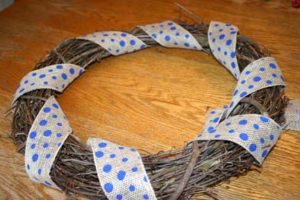 1st wrap the burlap ribbon around the wreath. Adjust the ribbon to be evenly distributed around the wreath, before gluing. The only part of the ribbon that needs to be glued are the two ends to the wreath and one another. I cut off or removed any sharp sticks/twigs that I worried might scratch the door.
1st wrap the burlap ribbon around the wreath. Adjust the ribbon to be evenly distributed around the wreath, before gluing. The only part of the ribbon that needs to be glued are the two ends to the wreath and one another. I cut off or removed any sharp sticks/twigs that I worried might scratch the door.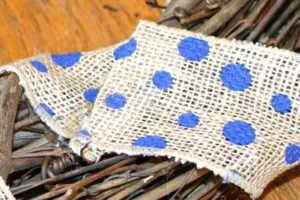
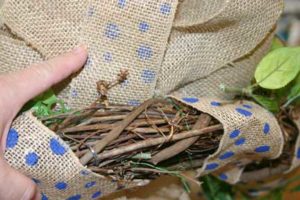



 Tie your burlap bow to the top by your loop. Use wire to do this; most pre-made bows come with wire already attached.
Tie your burlap bow to the top by your loop. Use wire to do this; most pre-made bows come with wire already attached.

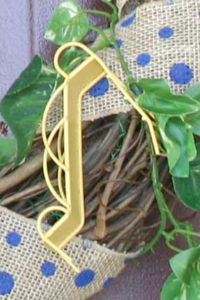



 It just makes me happy to see this on my door, so bright and inviting.
It just makes me happy to see this on my door, so bright and inviting.

















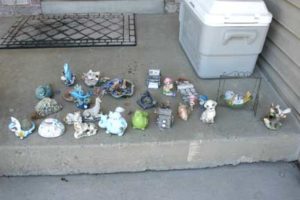


 They raised 4 children; 3 boys and 1 girl. Those boys were really close, great friends and quite the handful!
They raised 4 children; 3 boys and 1 girl. Those boys were really close, great friends and quite the handful!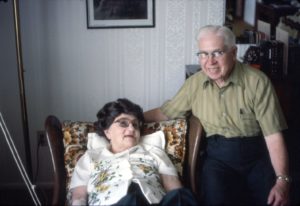 As a child, I watched how grandpa cared for and loved grandma. He was always happy and never cross, nor did he ever seem irritated. Waldo dressed her, bathed her, fed her and took care of all of her needs. She couldn’t do anything for herself and he was happy to serve her and be her hands.
As a child, I watched how grandpa cared for and loved grandma. He was always happy and never cross, nor did he ever seem irritated. Waldo dressed her, bathed her, fed her and took care of all of her needs. She couldn’t do anything for herself and he was happy to serve her and be her hands.

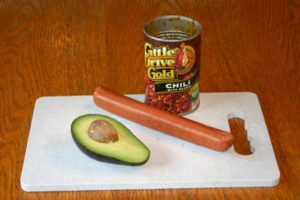

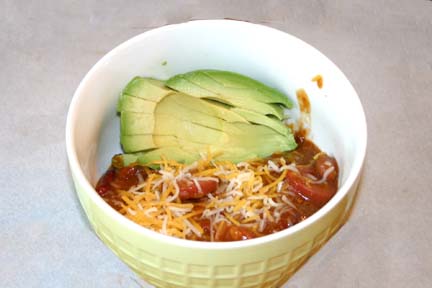

 While it may seem ideal to have big anniversary trips or do amazing and incredible things to celebrate your anniversary; that isn’t always possible. I know, I see my Facebook friends posting all the time about exotic and amazing places they are going on vacation to or celebrating their anniversaries. It would be so much fun to do and go to the places they are going!
While it may seem ideal to have big anniversary trips or do amazing and incredible things to celebrate your anniversary; that isn’t always possible. I know, I see my Facebook friends posting all the time about exotic and amazing places they are going on vacation to or celebrating their anniversaries. It would be so much fun to do and go to the places they are going!

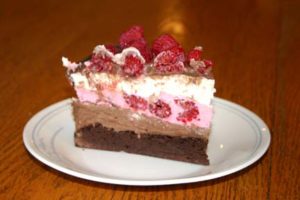

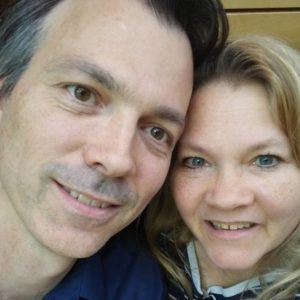

 My girls have had several opportunities over the years that we have been homeschooling to participate in plays. They have had opportunities for bigger parts than they would have had in a public school setting. They also work with a wide age range of kids, which helps them learn to get along with lots of age groups. This year my daughter is playing the part of Jasmine in our homeschool production of Aladdin Jr.
My girls have had several opportunities over the years that we have been homeschooling to participate in plays. They have had opportunities for bigger parts than they would have had in a public school setting. They also work with a wide age range of kids, which helps them learn to get along with lots of age groups. This year my daughter is playing the part of Jasmine in our homeschool production of Aladdin Jr. Our challenge is to make her hair black! She didn’t want to dye it because she loves her hair color. It really is a beautiful chestnut color! After doing pictures, I realized we needed to do some foundation on her skin. She is so pale! I don’t think there has ever been so pale of a Jasmine, before!
Our challenge is to make her hair black! She didn’t want to dye it because she loves her hair color. It really is a beautiful chestnut color! After doing pictures, I realized we needed to do some foundation on her skin. She is so pale! I don’t think there has ever been so pale of a Jasmine, before! My nails still have a little bit of color from the mousse under them and that was 5 days ago. I should have taken a picture! My hands looked like I had been doing some serious mechanical work. The color stayed on my hands and nails far longer than in her hair. She was too tired to wash her hair before bed and so the color got on her pillow case. I also found black on the shirt I was wearing. (It was a light blue and white color.) However, all of the color washed out really well from all material and you can’t tell the black ever got on it.
My nails still have a little bit of color from the mousse under them and that was 5 days ago. I should have taken a picture! My hands looked like I had been doing some serious mechanical work. The color stayed on my hands and nails far longer than in her hair. She was too tired to wash her hair before bed and so the color got on her pillow case. I also found black on the shirt I was wearing. (It was a light blue and white color.) However, all of the color washed out really well from all material and you can’t tell the black ever got on it.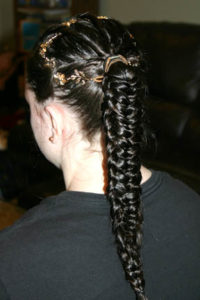

 She has gotten the Jasmine attitude about not wanting her father to choose her husband, down! Seriously, she is not the eye rolling, ornery teen. She has always been a really happy, easy going kind of girl.
She has gotten the Jasmine attitude about not wanting her father to choose her husband, down! Seriously, she is not the eye rolling, ornery teen. She has always been a really happy, easy going kind of girl. I am so excited for the performance! They did soooo good! I love to see my kids perform and enjoy expressing themselves and their talents!
I am so excited for the performance! They did soooo good! I love to see my kids perform and enjoy expressing themselves and their talents!







 You can check out more of my daughter’s work at
You can check out more of my daughter’s work at 

Recent Comments